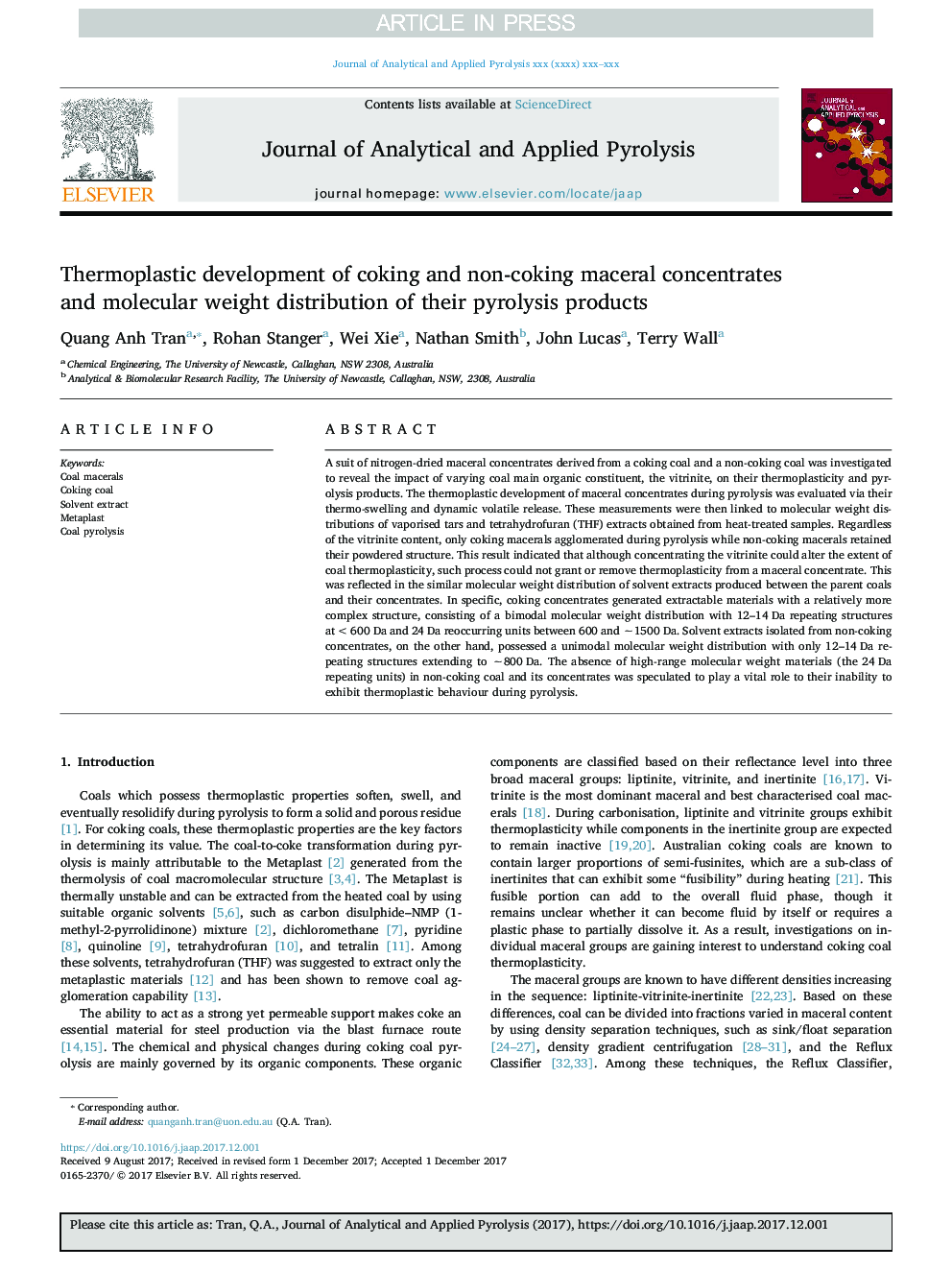| Article ID | Journal | Published Year | Pages | File Type |
|---|---|---|---|---|
| 7606408 | Journal of Analytical and Applied Pyrolysis | 2018 | 14 Pages |
Abstract
A suit of nitrogen-dried maceral concentrates derived from a coking coal and a non-coking coal was investigated to reveal the impact of varying coal main organic constituent, the vitrinite, on their thermoplasticity and pyrolysis products. The thermoplastic development of maceral concentrates during pyrolysis was evaluated via their thermo-swelling and dynamic volatile release. These measurements were then linked to molecular weight distributions of vaporised tars and tetrahydrofuran (THF) extracts obtained from heat-treated samples. Regardless of the vitrinite content, only coking macerals agglomerated during pyrolysis while non-coking macerals retained their powdered structure. This result indicated that although concentrating the vitrinite could alter the extent of coal thermoplasticity, such process could not grant or remove thermoplasticity from a maceral concentrate. This was reflected in the similar molecular weight distribution of solvent extracts produced between the parent coals and their concentrates. In specific, coking concentrates generated extractable materials with a relatively more complex structure, consisting of a bimodal molecular weight distribution with 12-14Â Da repeating structures at <600Â Da and 24Â Da reoccurring units between 600 and â¼1500Â Da. Solvent extracts isolated from non-coking concentrates, on the other hand, possessed a unimodal molecular weight distribution with only 12-14Â Da repeating structures extending to â¼800Â Da. The absence of high-range molecular weight materials (the 24Â Da repeating units) in non-coking coal and its concentrates was speculated to play a vital role to their inability to exhibit thermoplastic behaviour during pyrolysis.
Related Topics
Physical Sciences and Engineering
Chemistry
Analytical Chemistry
Authors
Quang Anh Tran, Rohan Stanger, Wei Xie, Nathan Smith, John Lucas, Terry Wall,
